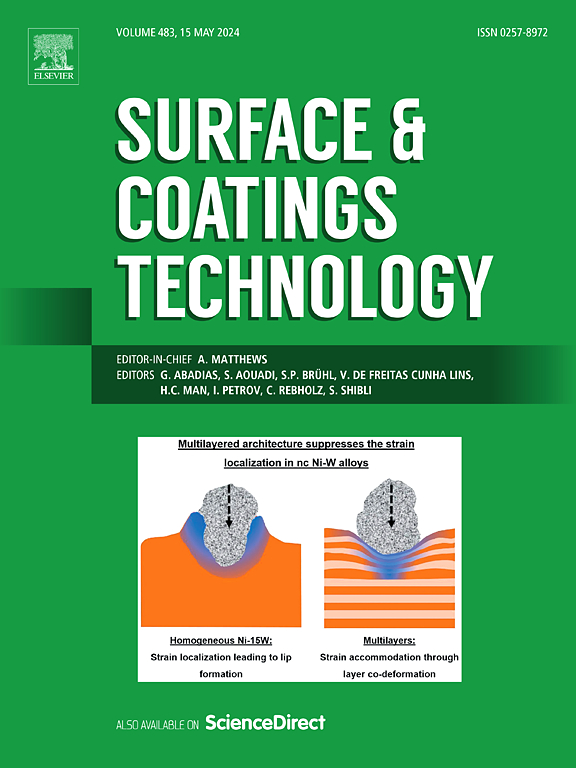Effect of TiO2 on hydrogen trapping and diffusion at grain boundaries in Cr2O3-based coatings: experimental and first-principles studies
IF 5.3
2区 材料科学
Q1 MATERIALS SCIENCE, COATINGS & FILMS
引用次数: 0
Abstract
The lifespan of pipelines exposed to hydrogen environments over an extended period can be significantly reduced due to hydrogen embrittlement, and there is a potential risk of hydrogen-induced cracking. Currently, the most effective method is to incorporate a hydrogen permeation barrier layer on the inner surface of the pipelines. Therefore, this paper employs plasma spraying technology to prepare Cr2O3 and Cr2O3–10%TiO2 hydrogen permeation barrier coatings and combines first-principles calculations based on density functional theory to explore in depth the synergistic effects of Cr2O3 and TiO2 on hydrogen permeation resistance. Experimental results indicate that the doping of TiO2 not only significantly enhances the surface smoothness of the coating but also effectively reduces pore defects. This improvement directly prolongs the time required for hydrogen atoms to penetrate the coating and decreases the hydrogen permeation current density, thereby greatly enhancing the hydrogen barrier performance of the coating. Furthermore, first-principles calculations reveal that the hydrogen permeation resistance mechanism of the composite coating primarily relies on two core aspects: on the one hand, its dense crystalline structure and stable chemical bond structure effectively hinder the adsorption process of hydrogen atoms on the coating surface, slowing down the permeation rate of hydrogen atoms. On the other hand, once hydrogen atoms successfully penetrate the interior of the hydrogen permeation barrier layer, they are trapped by interstitial sites and vacancies within the coating, effectively preventing further diffusion of the hydrogen atoms.
求助全文
约1分钟内获得全文
求助全文
来源期刊

Surface & Coatings Technology
工程技术-材料科学:膜
CiteScore
10.00
自引率
11.10%
发文量
921
审稿时长
19 days
期刊介绍:
Surface and Coatings Technology is an international archival journal publishing scientific papers on significant developments in surface and interface engineering to modify and improve the surface properties of materials for protection in demanding contact conditions or aggressive environments, or for enhanced functional performance. Contributions range from original scientific articles concerned with fundamental and applied aspects of research or direct applications of metallic, inorganic, organic and composite coatings, to invited reviews of current technology in specific areas. Papers submitted to this journal are expected to be in line with the following aspects in processes, and properties/performance:
A. Processes: Physical and chemical vapour deposition techniques, thermal and plasma spraying, surface modification by directed energy techniques such as ion, electron and laser beams, thermo-chemical treatment, wet chemical and electrochemical processes such as plating, sol-gel coating, anodization, plasma electrolytic oxidation, etc., but excluding painting.
B. Properties/performance: friction performance, wear resistance (e.g., abrasion, erosion, fretting, etc), corrosion and oxidation resistance, thermal protection, diffusion resistance, hydrophilicity/hydrophobicity, and properties relevant to smart materials behaviour and enhanced multifunctional performance for environmental, energy and medical applications, but excluding device aspects.
 求助内容:
求助内容: 应助结果提醒方式:
应助结果提醒方式:


